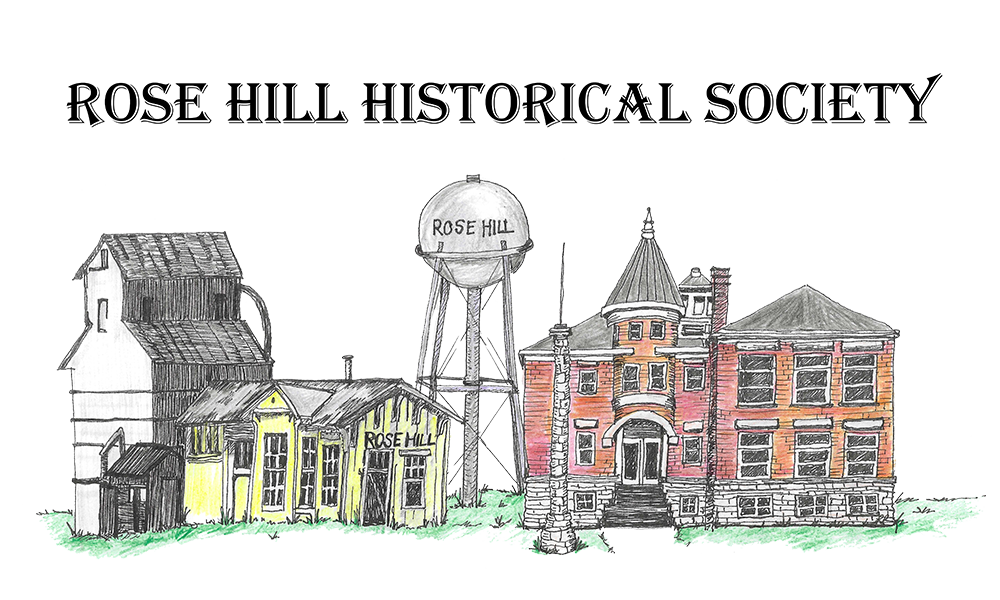By Chris Wendt
Published in The Rose Hill Reporter, Thursday, May 3, 2012
It was 2:15 a.m. on the 15th of July in 1945 and the world was still entrenched in WWII. In the night sky above Rose Hill, a B-25 Bomber was flying a routine training mission, returning to Pampa Army Air Field, Pampa, TX.
Aboard the plane was 18 year-old pilot Milton Fagundes of Brazil and American co-pilot, flight cadet Quentin Elsey. The Army Air Corps had en
tered into an agreement with several foreign governments to train their young men to fly military aircraft. Such was the situation that July night.
The plane had just taken off on a full tank of 650 gallons of fuel at the Wichita Municipal Airport on S. Oliver St. in Wichita. They were in a southeast flight path headed for Tulsa, OK. Pre-flight check lists had gone smoothly and they climbed to an altitude of 4,300 and leveled off. It was then they began to lose airspeed and consequently altitude.
Both pilots began an assessment for probable causes with the flaps and engines. According to Elsey, in the process of verifying airspeed, he reached over to the pilot’s controls and adjusted the fluorescent lamp to see the airspeed indicator. During the adjustment, the lamp shorted out and caught fire.
He immediately called to pilot to bail out and promptly began to move to the escape hatch. After assuring himself the pilot was following suit, he bailed out. Moments later the pilot also abandoned the aircraft. Both men later stated they saw the plane on fire and heard one mid-air explosion before it hit the ground exploding in all directions.
The plane crashed at approximately 2:30 a.m., three and one half miles east of Rose Hill Rd. on E. Silknitter, near the Nick Jones home. The William Alley family was awakened by the family dog barking at the south bound road. Once outside to investigate the situation, Alley could distinguish a figure clutching a white bundle to his chest headed in his direction.
It turned out to be the Brazilian pilot Fagundes, who had landed unscathed near Eight Mile Creek. The burning plane could be seen as a bright glow on the eastern horizon. Inside the Alley home came a call from Maude Peters who had the American co-pilot Elsey on her front porch, also unhurt.
Alley’s sons, Mark and Marion, accompanied their father and Fagundes when they picked up Elsey and headed to the airport at 3:30 a.m. to report the crash.
Returning to Rose Hill, Alley drove to the crash site where the smoldering wreckage lay. No civilian or military authorities were as yet on the scene. After morning chores, they returned to find military personnel clearing the debris field. According to documentation, no on-site investigation took place nor was it stated where the military personnel were from.
Current Rose Hill resident Keith Cox remembers the incident. “I was 12 years-old at the time and went out to the site at 10 a.m. the next morning with my dad Kermit Cox and uncle Shorty Cox,” said Keith. “It was just across from Nick Jones (Red Line Auto) home. All you could really see was a bunch of sheet metal that was still smoldering. There was no security or anything anywhere.”
A formal accident review board at the Army Air Corps headquarters later exonerated both pilots due to lack of experience but made training recommendations as a result of the near tragic accident.
Nothing more was heard of Elsey but Fagundes went on to work with Beechcraft industry and made two more return trips to Wichita over the years in that capacity. He contacted the Alley family 23 years later on his second trip in 1968 and they met to talk about the crash again and revisit the site.
Mark Alley presented Fagundes with a painting of the burning plane in flight which went back to Rio De Janeiro with him. They kept in touch over the ensuing years. Mark now lives in Missouri, is a former Rose Hill High School graduate and has written a short, softbound book on his remembrances of growing up in Rose Hill. They may be purchased at the Rose Hill Historical Museum.
